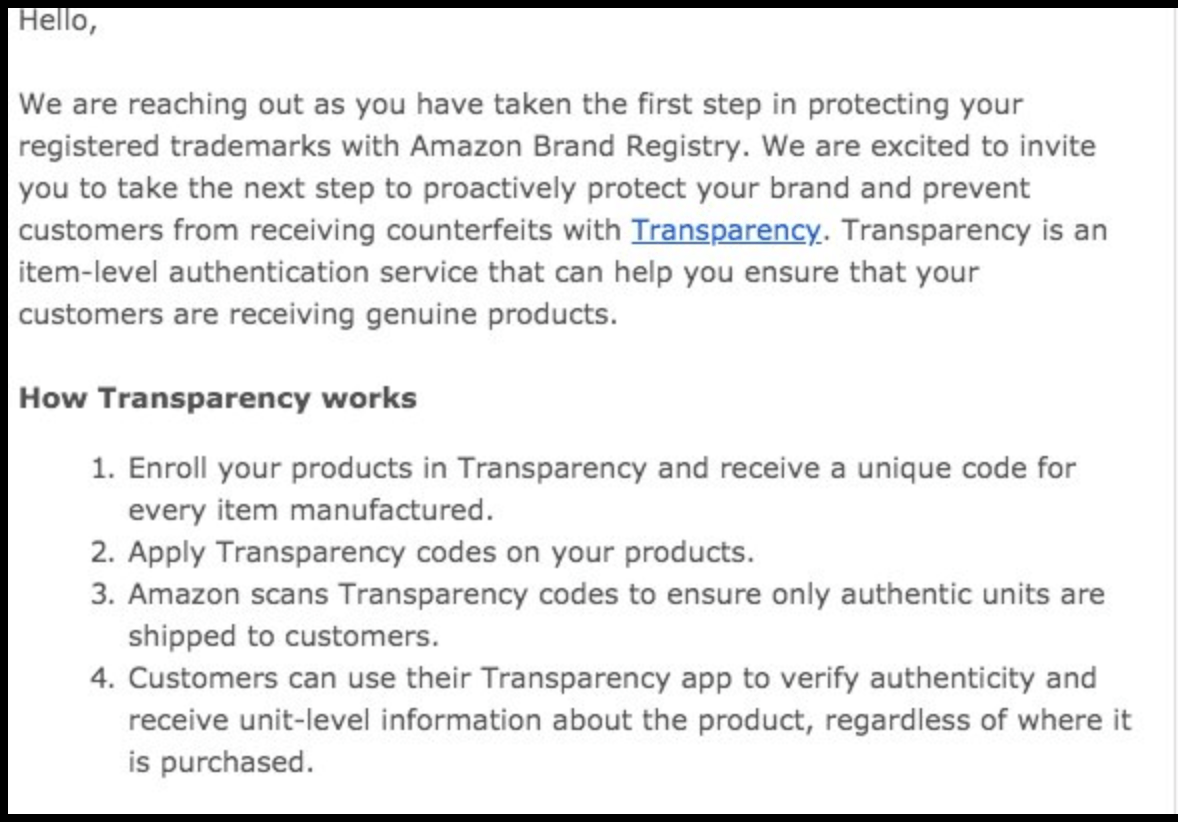Amazon News Roundup, Volume 8
Seller chatter
Hijackers are a plague. But, thankfully, Amazon is taking steps to remove them from its retail platform.
If you’ve never heard the term before, a ‘hijacker’ is another third-party seller who sells products on your listing. Often, these products are knock-offs, drop-shipped goods from competitors, or even your own product bought at a discount.
Regardless of the method, hijackers can steal the Buy Box from you, force a price war by listing their item lower than yours, and affect your overall status as an Amazon FBA seller.
In our exclusive Facebook group, Amazon Competitive Edge, we got some insights from sellers who have been affected by hijackers.
“Counterfeiter [was] selling [fulfilled by Merchant]. Limited buy quantity to two so [I don’t know] how many he claims to have. Tanked the price and took the buybox.”
“Had someone reselling my product they bought on giveaway sites. Only on my listing a day or two until they sold a few units. Once I ended giveaway I noticed no more hijackers.”
“I had six in Canada and four in the US that copied by listing. Once I was out of stock, they disappeared so I think they are drop shippers.”
Some even believe that Amazon itself is capable of hijacking the listings of its third-party sellers.
“Amazon’s retail team hijacked me and two others’ listing. They used my UPC (and two others) to merge three listings into one listing with three variations.”
“I have a feeling Amazon employees are capable of leaking product information to friends and relatives…”
The latter comments seem to be edge cases, however.
It can happen to anyone.
Even Jungle Scout’s own Amazon FBA product, Jungle Stix experienced hijackers last summer.
When Jungle Stix ran out of inventory following Prime Day 2018, multiple sellers leaped on our listing and started offering the product. We quickly noticed that the products were not ours, but were actually other Amazon products being drop-shipped via our listing.
You can learn more about what happened on our sister site, Forecastly.
How to prevent hijackers
There are two key methods for preventing hijackers on Amazon:
- First, make sure your product is registered with Amazon’s Brand Registry. In many of the cases mentioned above, the products were not registered, often because the sellers were waiting for their trademark. Keep in mind that the brand registry doesn’t full prevent hijackers. If another seller lists a product on your listing and that product is actually your listing, then it is within the realm of Amazon’s Terms of Service to do that. However, if the seller is selling a fake, or drop shipping another product– common hijacker tactics–then the Brand Registry can prevent that.
- Second, don’t run out of stock. When you run out of stock, clever hijackers will list a product on your page, then use another, similar product to supply the product via drop shipping when an order is made. Again, if they’re actually selling your product, it’s not against Amazon’s rules. But if they are selling a counterfeit, they are violating Amazon’s terms of service.
Amazon’s Transparency Program
There is a light at the end of the tunnel though since it looks like Amazon is working to put an end to counterfeit goods. After all, their reputation is on the line too. They take a hit every time their customers receive counterfeit products.
So, to help prevent counterfeiters from selling fake products on another seller’s listing, Amazon recently started sending the following notification to sellers:

You can learn more about the Transparency service and the app through Amazon’s Transparency page.
Greg Mercer, founder/CEO of Jungle Scout, said this about the new program:
I met with the guy who runs this program while I was in Seattle. The plus side is Amazon can verify that its not a counterfeit when they log it into their warehouse. The biggest downside is you pay $0.10 per label, and whoever creates the label has to have a special printer with access to their API. This actually doesn’t prevent other people from selling non-counterfeit items on your listings (e.g. something they bought at a discount) but it does remove counterfeits…
EDIT: A few clarifications on Amazon’s Transparency program:
- Transparency doesn’t prevent hijackers. It just prevents counterfeits. The difference is hijackers are just someone else selling on the same listing as you (which is within Amazon TOS). In other words, not all hijackers use counterfeit goods. Some are actually selling other sellers products.
- Counterfeits are what they sound like–a copy of your product that is a legitimate counterfeit. Transparency prevents counterfeits by offering one-off barcodes that Amazon can prove.
Bottom line
The good news is that the program helps remove counterfeit products.
However, the Transparency program solution increases costs for sellers and adds an extra step. Furthermore, it insists Amazon’s customers use the service.
So, while this may not be the best fix for this problem, it is a step in the right direction.
And even with added costs for sellers, it’s still better than having a product’s reputation and listing ruined by disreputable hijackers!
Want to get in on the chatter?
If you’re a Jungle Scout user, join our members-only Facebook group:
Amazon FBA news this week
Need to know for Amazon FBA Sellers
- Amazon is (so far) winning its war against products liability exposure – EcommerceBytes
- Mysterious Amazon packages part of brushing scam – Bloomberg
- The 4 most helpful reports you can run using Amazon ad data – Entrepreneur
Also of interest:
- Amazon is on a hiring spree in China,exclusive data shows – Yahoo! Finance
- Jeff Bezos’s corporate takeover of our lives – InTheseTimes
- Gary Vaynerchuk: This side hustle can end debt and earn a struggling person up to $100,000 in income – CNBC
Anything we missed?
Let us know what’s important to you by filling out the following (anonymous) form:

 No Comments
No Comments